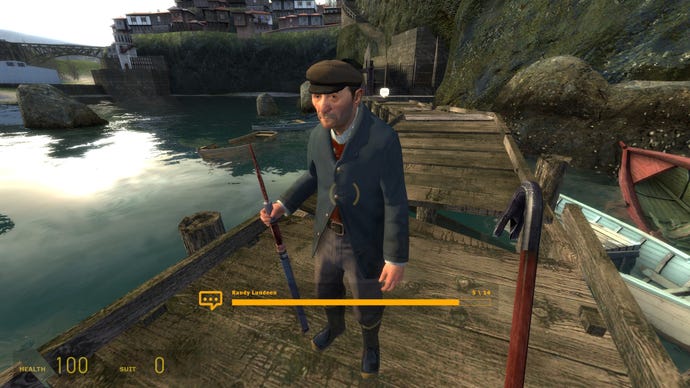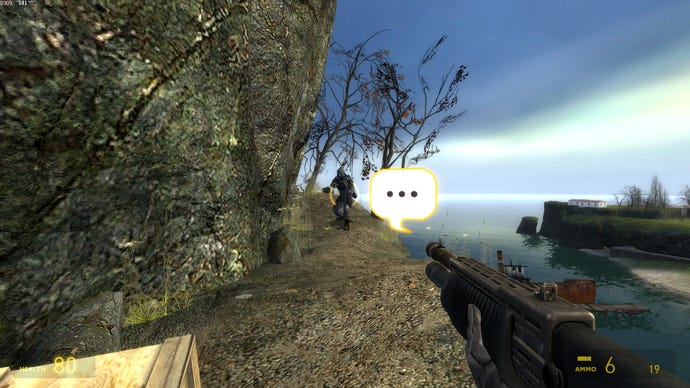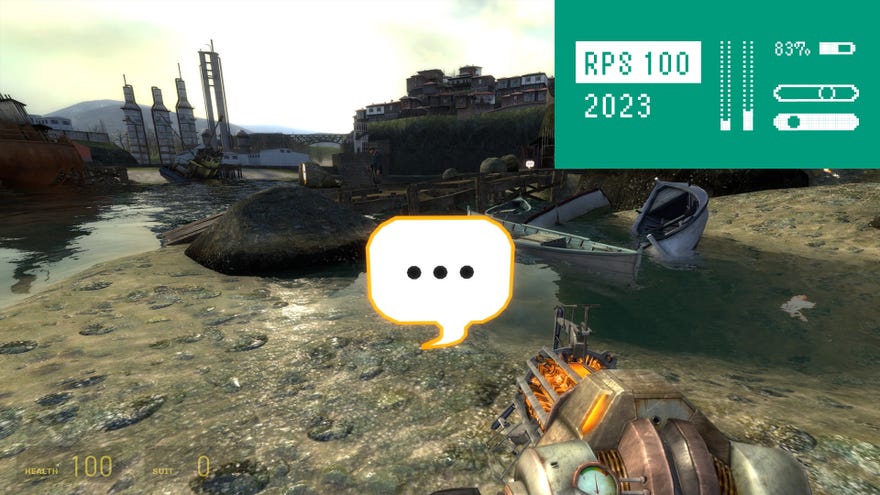More games should steal Half-Life 2: Lost Coast's developer commentary
Tell me your secrets
If you own Half-Life 2 but never bothered with its freebie tech demo, Half-Life 2: Lost Coast, do give it a whirl. Its showcase of HDR lighting might have lost the "Huh, nice" factor it had in 2005, but it’s still a satisfying slice of punchy HL2 combat, with a nod to the original Half-Life that Valve regretted not making in the main game. I know this because Valve told me, via Lost Coast's other innovation: its developer commentary.
I love these things, these spinning speech bubbles inflated with knowledge straight from the FPS coalface. So do Valve, judging by how dev commentary has appeared (in identical, node-activatable form) in most of their games since. They’re interesting and illuminating, don’t interfere with the game unless the player wants them to, and help build design literacy. Why, then, don’t more games offer commentary as well?
Prior to Lost Coast, there were very occasional attempts at introducing the DVD commentary concept to games. F.E.A.R., for instance, released with a special Director’s Cut version that included an hour-long video of numerous Monolith Productions staff watching and commentating on a playthrough. Still, it was Lost Coast that pioneered the in-game commentary format, allowing players to glean insights into what they were seeing and experiencing at that very moment. Pioneered, but not necessarily popularised: the most exhaustive list of games with developer commentary I can find (Giant Bomb’s) records a mere 60 in total. Eight of these are Valve’s, and it misses out Left 4 Dead 2.

That question above wasn’t a rhetorical device, by the way. I honestly don’t know. Perhaps a lot of studios just don’t like showing how the sausage is made? Or maybe commentary isn’t perceived as a particularly marketable feature outside of special edition bonuses. Isn't it just super neat to have, though? I’m no aspiring dev but it’s fascinating to learn about all the techniques that go into pulling off a scene, or quietly guiding player behaviour, and all the vast sums of work that go into individual moments or seemingly simple visual effects.
I was going to compare it to having a magic show explained, but the reason magicians don’t explain their tricks is to maintain their spectacle, and I’m not convinced games are a similar case. Bewilderment at how they’re technically pulled off is not itself an element of why games are entertaining, unlike with magic, so developer commentaries can’t really hurt the suspension of disbelief. They can, however, develop the player’s understand of and empathy for the difficulties in building these damn things.

If committing resources is a concern, it doesn’t even need to be in the form of audio vignettes (though there are good reasons, accessibility-wise, to fully copy Lost Coast’s sound-plus-subtitles approach). Mark of the Ninja’s dev commentary is purely text, which pops up whenever you activate a Valve-style commentary node. These notes are short and sweet, yet still provide a compelling variety of design insights and explanations for the game’s historical inspirations and context.
A fine example, but please, let’s have some more. More knowledge shared, more understanding gained, more floaty speech bubbles in the middle of gunfights. That will be Lost Coast’s true legacy, not it being a long-outdated tech demo.

